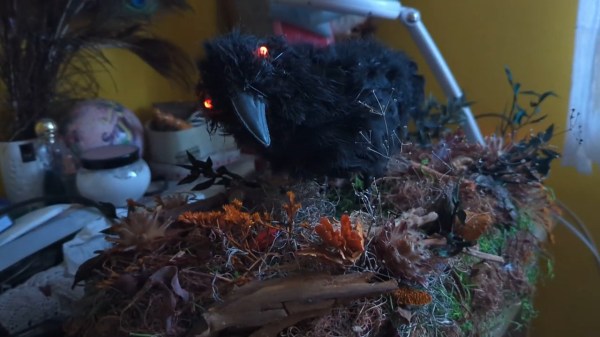When the project description starts with the sentence “I use an RC remote and receiver, an esp32, high-current motor drivers, servos, an FPV camera, and a little propane”, you know that this is one which deserves a second look. And so [gearscodeandfire]’s Halloween project caught our eye. It’s a pink Power Wheels jeep driven by a skeletal rider, and the best part is that the whole thing is remote controlled down to a pan-and-tilt skull, a first-person video feed, and even real flames.
At its heart is an ESP32 with a set of motor controllers and relays to do the heavy lifting. The controller is a standard radio remote controller, and the first-person view is an analogue feed as you’d find on a drone. The skeleton is given a child-like appearance by discarding the original adult-proportioned plastic skull and replacing it with a much larger item. The thought that plastic Halloween skulls are available in a range of standard sizes and can be considered as a part in their own right is something we find amusing. The propane burner is supplied from a small cylinder via a solenoid valve, and ignited with the spark from a high-voltage transformer.
The result, we think, wins Halloween hands down. Twelve-foot skeletons are SO 2023!
The video is below the break.
Continue reading “Flaming Power Wheels Skeleton Wins Halloween”





















